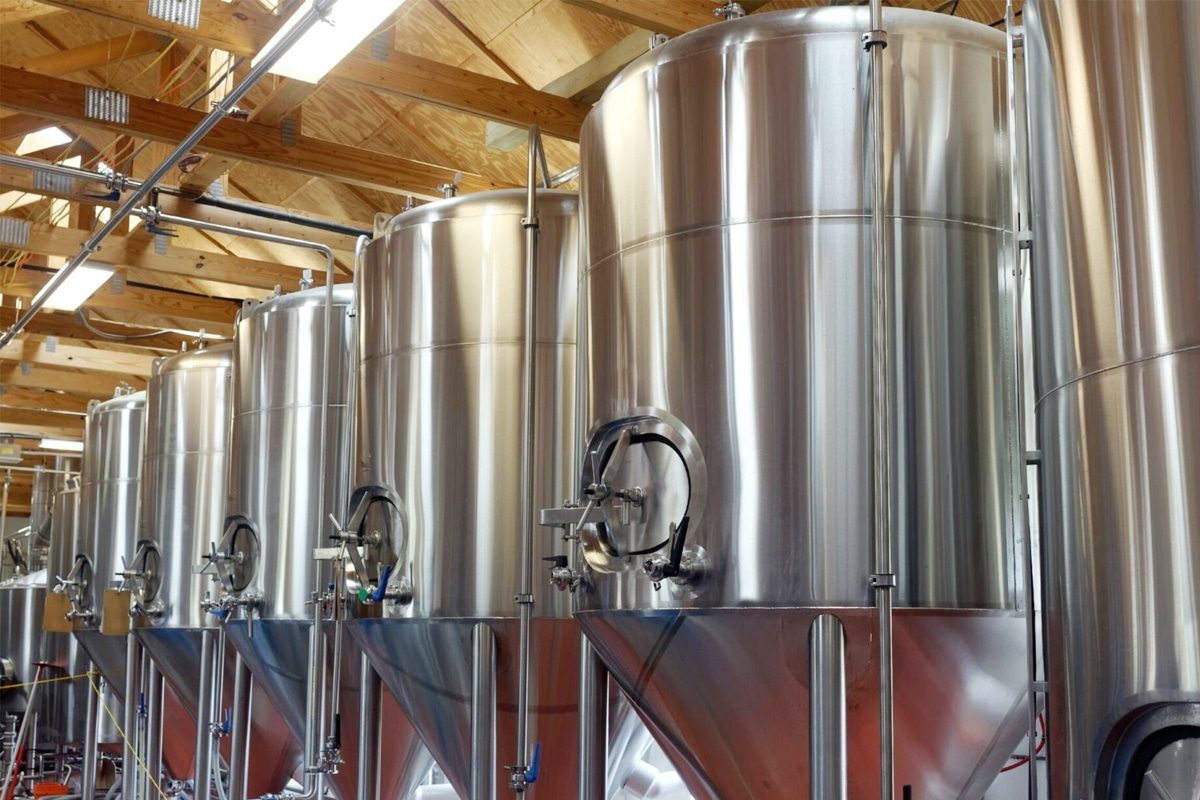
How To Clean A Fermentation Tank?
In fermentation, yeast and bacteria work together with sugar to create delicious concoctions. Whether crafting fine wines, brewing craft beers, or pursuing biotech breakthroughs, the vessels in which these microbial symphonies are cultivated are key to the pursuit of perfection. The cleanliness of this humble yet vital container is not only a prerequisite but a necessity. It is the cornerstone of making the best beverages and valuable compounds.
In this comprehensive guide, we journey to the heart of the brewing and biotech mecca to discover the meticulous craft of fermentation tank cleaning. This practice is more than just a procedural step, it is an art form that is a testament to the commitment of artisans who understand that the alchemy of fermentation begins with a canvas uncontaminated by residue and impurities.
Complete Guide
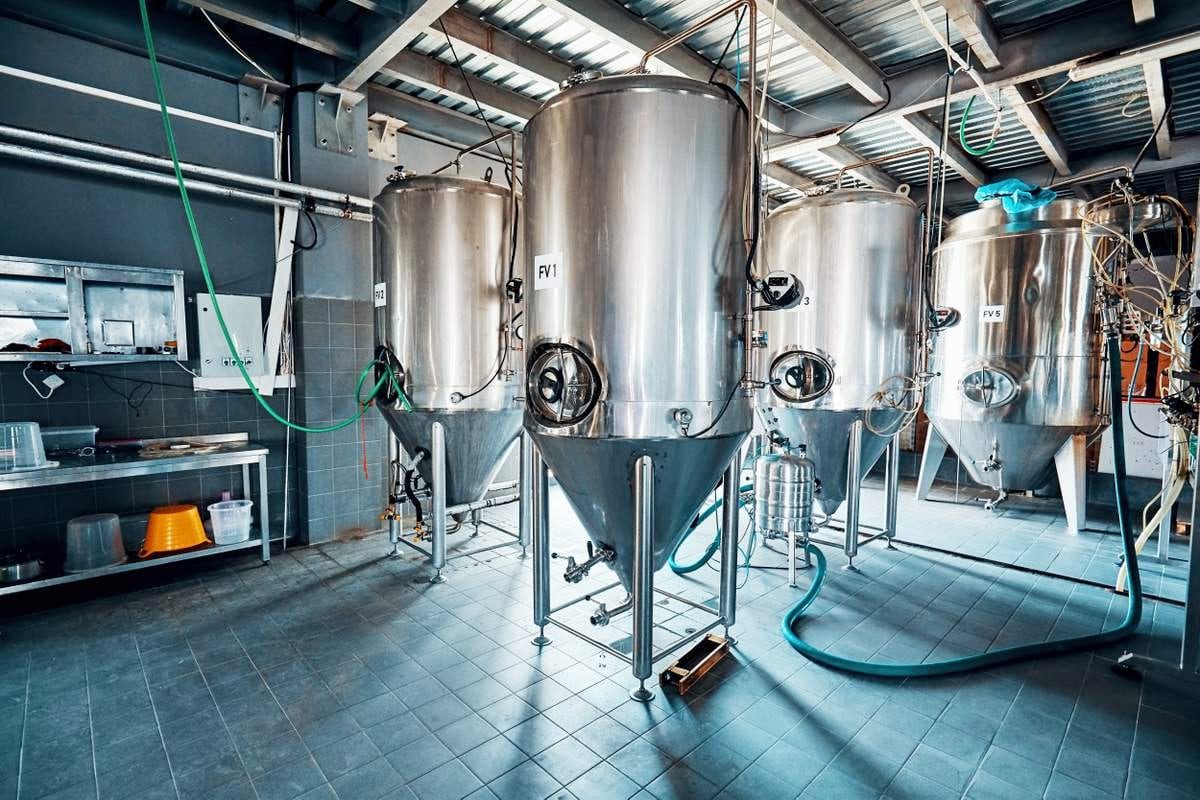
The Importance of Fermentation Tank Cleaning
In the alchemical ballet of fermentation, the cleanliness of the fermentation tank becomes the most important factor, which has a profound impact on the purity, quality, and consistency of the final product. Next, let’s discuss the importance of fermentation tank cleaning.
Keep The Fermentation Environment Clean
At the heart of fermentation is a delicate ecosystem in which microorganisms work harmoniously to convert sugar into alcohol and CO2. Any foreign elements during fermentation, whether leftovers from previous batches or unwanted contaminants, can disrupt this delicate balance. By thoroughly cleaning the fermentation tanks, brewers create a sacred environment that allows microorganisms to carry out the art of fermentation without interference.
Ensure Product Purity And Integrity
The ultimate goal of the fermentation process is to produce a beverage or substance whose purity and integrity are not compromised. Residues left in the jar can impart odors, aromas, or undesirable properties to the product. Cleaning the fermentation tank becomes a critical step in preserving the essence of the intended result, ensuring each batch maintains its intended characteristics.
Reduce Contamination Risk
Contaminants pose an ever-present threat to the success of the fermentation process. Bacteria, wild yeast, or other microorganisms can infiltrate the tank, causing unintended and often harmful results. Cleaning protocols serve as a powerful barrier against contamination, protect products from spoilage, and ensure that each batch meets quality and safety standards.
Improve Fermentation Consistency
Consistency is the hallmark of any successful fermentation endeavor. Cleaning tanks between batches eliminates variables that can compromise the consistency of the final product. It allows practitioners to start each fermentation cycle with a clean slate, reducing the risk of residual flavors or unexpected interactions that could compromise the uniformity of the final product.
Extend Equipment Life
The fermentation tank is a significant investment and its longevity is directly dependent on the care it receives. Residues, especially corrosive residues, accelerate wear and can lead to structural damage. Regular and thorough cleaning extends the life of your fermentation tank, protecting this important piece of equipment and ensuring a sustainable and cost-effective production process.
Meet Regulatory Standards And Industry Compliance
Across industries, compliance with regulatory standards is non-negotiable. Comprehensive fermentation tank cleaning not only adheres to industry best practices but also ensures compliance with strict cleaning and hygiene regulations. This is particularly important in industries such as brewing and biotechnology where product safety and quality standards are strictly enforced.
The importance of cleaning your fermentation tank cannot be overstated. It is the cornerstone of the entire brewing process, embodying not only routine but also dedication to the purity, quality, and reliability of the final product. It’s a commitment to craftsmanship, respect for microbial artisans, and a guarantee of excellence in every batch.
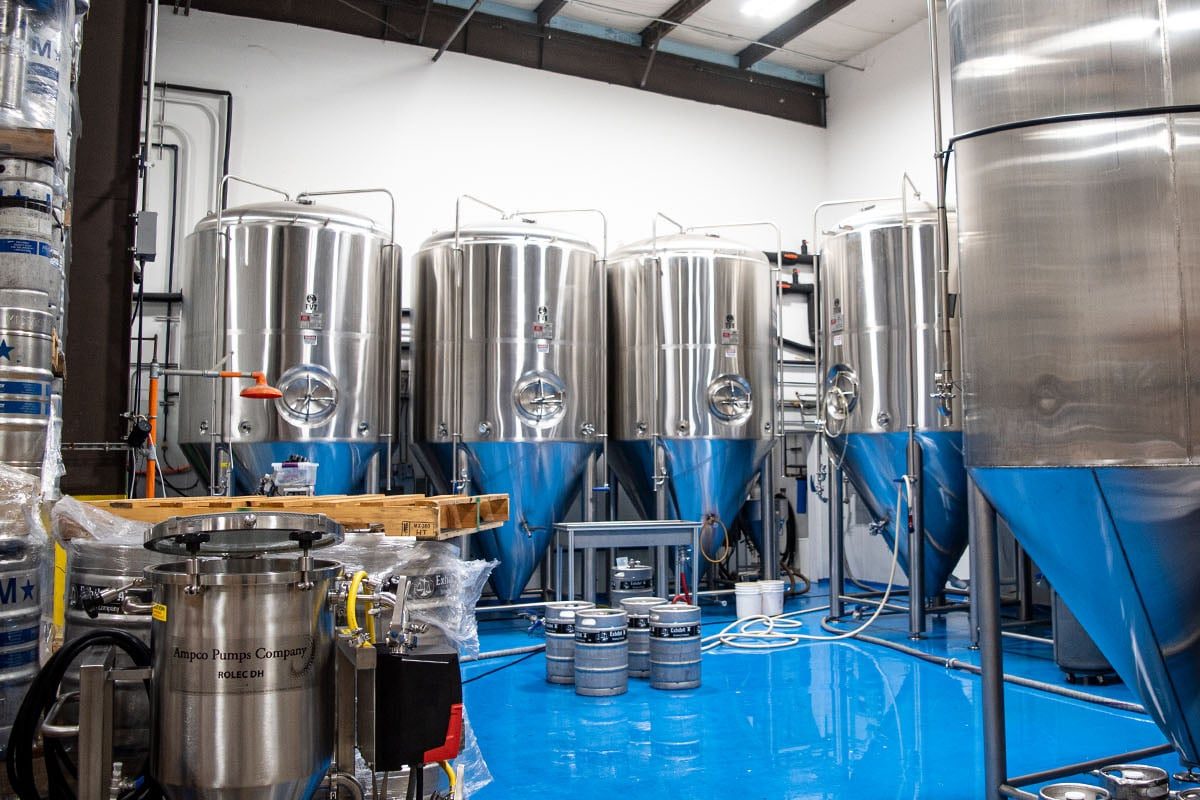
Preparing For The Cleaning Process Using a CIP System
In the world of fermentation tank cleaning, efficiency and precision are crucial. The advent of modern technology has introduced clean-in-place (CIP) systems, a revolutionary method that streamlines the cleaning process, reduces manual labor, and ensures more thorough hygiene.
Empty The Fermentation Tank
Before starting the CIP system, it is necessary to ensure that the contents of the fermentor are empty. Not only does this step comply with traditional cleaning protocols, but it also establishes a clean canvas for the precise operation of the CIP system, unencumbered by residual liquids or solids.
Assessment And Pre-Flush
The efficiency of a CIP system increases when it operates on a surface that is free of loose particles and visible residue. Conduct a thorough assessment of the tank interior to identify any visible debris or sediment. After conducting the assessment, a pre-flush cycle is initiated using a high-pressure hose to remove loose particles and facilitate the CIP system to focus its attention on the targeted cleaning area.
CIP System Parameter Configuration
Each fermentation tank may have unique characteristics and cleaning requirements. Configure the CIP system parameters according to the specific conditions of the fermentation tank, taking into account factors such as size, geometry and the nature of the residue to be removed. Adjust the flow, temperature, concentration, and other parameters of the cleaning fluid to ensure the best cleaning effect. Many modern CIP systems offer programmable controls, allowing for customization to meet the unique needs of each cleaning cycle.
Choice of Detergent
Electric heating systems are favored by a range of beer businesses, from boutique craft breweries to innovative home breweries. Breweries such as Otway Brewing have successfully implemented electrical systems, touting the advantages of precise temperature control and the ease of adapting the method to small-scale operations. These real-world applications demonstrate the versatility of electric heating, proving its effectiveness in a variety of brewing environments. As we further explore brewhouse heating options, the electric system demonstrates the seamless integration of innovation with the age-old craft of brewing.
Equipped With Personal Protective Equipment (PPE)
Even though CIP systems are highly efficient, safety remains the top priority. Be equipped with necessary personal protective equipment (PPE) such as rubber gloves, goggles, and appropriate work clothing to protect against potential chemical exposure. Although CIP systems minimize direct human involvement, personal protective equipment (PPE) ensures that those operating the equipment are protected from any unforeseen issues.
Ensure Adequate Ventilation
Once the CIP system is in place, make sure the fermentation area is well-ventilated. Proper airflow helps dissipate any smoke or vapor generated during cleaning, maintaining a safe and supportive environment for equipment and personnel.
CIP System Functional Verification
Before starting a comprehensive cleaning process, verify the functionality of the CIP system. Verify that all components are functioning properly, from pumps and valves to sensors and controllers. Meticulous pre-cleaning checks ensure that the automated system performs its tasks accurately and there are no unexpected interruptions during the cleaning process.
Ensure Accessibility of CIP Components
Given the automated nature of the CIP system, ensure that all components, including nozzles and transfer lines, have unobstructed access to the entire interior of the tank. This strategic approach ensures that the system efficiently navigates the tank’s geometry so that no corner is left unturned during the automated cleaning process.
Documentation And Record-Keeping
As with any cleaning process, documentation remains a key component of quality assurance. Record configuration settings, detergent concentrations, and any observations made during the pre-cleaning phase. This CIP record serves as a valuable reference point for future cleaning cycles, ensuring consistency and adherence to best practices.
The use of CIP systems to prepare cleaning processes demonstrates the advancement of fermentation technology. By employing automation, custom cleaning solutions, and prioritizing safety, CIP systems transform once labor-intensive tasks into streamlined and efficient operations. When a CIP system is seamlessly integrated into the pre-cleaning process, it becomes an indispensable ally in the pursuit of hygiene, quality, and excellence in the fermentation sector.
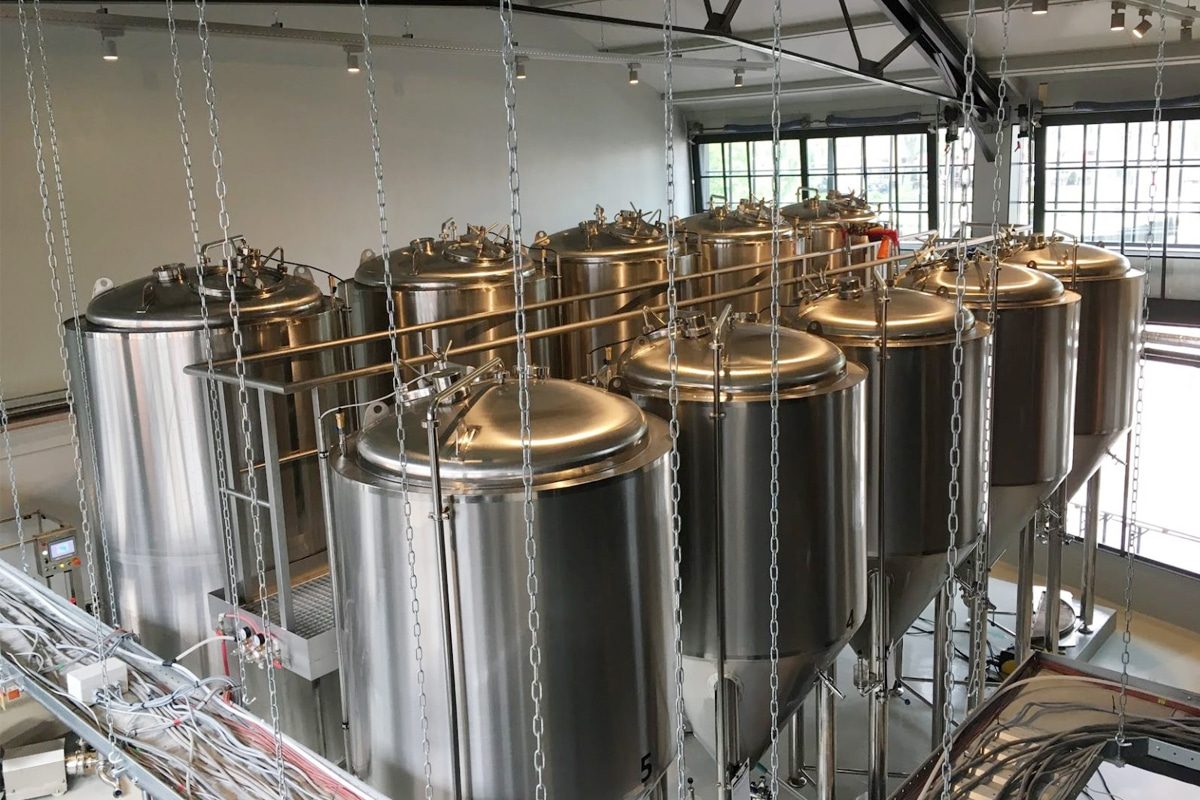
Cleaning Fermentation Tanks Using The CIP System
In the contemporary world of fermentation tank maintenance, the emergence of clean-in-place (CIP) systems has revolutionized the fermentation tank cleaning process, improving efficiency, precision, and consistency. Let’s delve into the complex steps of cleaning fermentation tanks with a CIP system.
CIP System Configuration And Setup
- Configuration Parameters: First configure the CIP system and adjust parameters such as flow rate, temperature, and cleaning agent concentration. This customization ensures that the cleaning process is precisely tailored to the unique requirements of the fermentation tank.
- Programmed Controls: Utilize the CIP system’s programmable controls to set cleaning cycles consistent with specific residues identified during tank assessment. These controls provide a level of precision that ensures optimal cleaning results.
Cleaner Selection
- Compatibility Check: Choose a cleaning agent that is compatible with the CIP system. Ensure that the chosen solution integrates seamlessly with the system’s automated delivery mechanism.
- Automatic Delivery: The Integrated CIP system automatically delivers cleaning agents to the entire fermentation tank. The design of the CIP system needs to ensure even coverage, reaching every nook and cranny of the fermentation tank, eliminating the need for manual intervention.
Initiation of The CIP Cleaning Cycle
- System Startup: Before starting a cleaning cycle, verify that the CIP system is primed and ready to go. Check the connections to confirm the presence of the cleaner and make sure all components are in working order.
- Start of The Cycle: Starts the CIP cleaning cycle, allowing the system to automatically circulate cleaning solution throughout the fermentation tank. Automation ensures consistent and thorough dispensing of cleaning agents.
Monitor And Verify
- Real-Time Monitoring: Oversee the cleaning process with real-time monitoring tools integrated into the CIP system. This vigilance allows for immediate identification and resolution of any anomalies that may arise during the cycle.
- Verification Check: After the cleaning cycle is complete, perform a verification check to ensure residue has been effectively removed. These inspections may include visual inspection, microbiological testing, or chemical analysis, depending on the specific requirements of the fermentation process.
Flushing Phase
- Water Flushing: Thorough water flushing via the CIP system. This step flushes away the detergent as well as dissolved residue, leaving the water tank in a pristine state.
Disinfect
- Disinfection Solution Integration: If an additional layer of microbial control is required, integrate a disinfection solution into the CIP system. Allow the disinfectant to circulate through the system to ensure complete coverage.
- Contact Time Compliance: Strictly adhere to the recommended contact times for disinfectant solutions to ensure the effective elimination of microorganisms. CIP systems automate this process, ensuring accuracy and compliance with industry standards.
Final Inspection And Verification
- Visual Inspection: After the CIP cleaning cycle, perform a careful visual inspection of the fermentation tank. While the CIP system handles most of the work, the human touch ensures that no detail is overlooked.
- Validation Protocol: Perform validation protocols, such as microbiological testing or chemical analysis, to demonstrate fermentation tank cleanliness and readiness for the next production cycle.
Drying Stage
- Air Dry: Allow the fermentation tank to air dry completely. The CIP system minimizes excess moisture introduced during the cleaning process, thereby promoting a faster and more efficient drying phase.
- Dryness Verification: Confirm that all surfaces are completely dry through visual inspection or a moisture detection tool. This verification ensures that the fermentation tank is truly clean and ready to embark on your next alchemical journey.
In the field of fermentation tank cleaning, the CIP system appears as a master of art, playing a symphony of precision and automation. From configuration to validation, every step in the CIP cleaning process helps capture the pristine condition of your fermentation vessel.
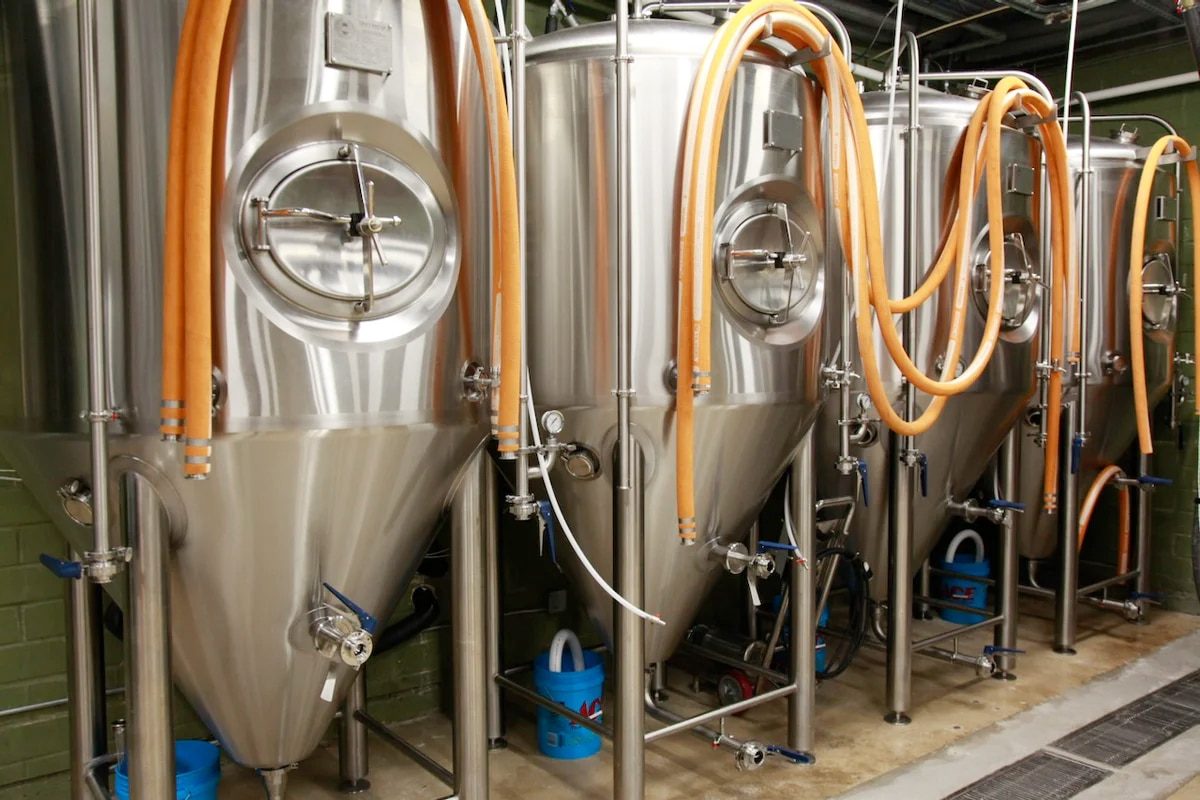
Record After Cleaning
When the fermentation tank cleaning process is over, the responsibility does not end with the completion of the final flush or clean-in-place (CIP) cycle. Post-cleaning documentation is a critical step that provides a concrete record of the meticulous efforts that go into maintaining a clean environment.
Comprehensive Record Keeping
- Cleaning Log Entry: Initiate post-cleaning logging by carefully recording all relevant details of the cleaning process in a designated log. Include the date, time, people involved, cleaners used, concentration, and duration of each cleaning phase. This chronological record can serve as a blueprint of cleaning events for future reference.
- Observations And Findings: Record observations from visual inspection after cleaning. Note any abnormalities, challenges encountered, or areas that may need special attention during subsequent cleaning cycles.
- Fermentation Tank Identification: Identify the fermentation tank under consideration. Include specific details such as tank number, dimensions, and any unique identifiers. This tag ensures that the document is aligned with the correct container.
Quality Control Log
- Cleaning Efficacy Verification: Include verification steps in the documentation to confirm the effectiveness of the cleaning process. This may involve microbiological testing, ATP (adenosine triphosphate) swabs, or other quality control measures to ensure that no residue or microbial contaminants are present.
- Equipment Integrity Verification: Document verification of equipment integrity after cleaning. This may involve inspection to confirm that there is no damage, corrosion, or other issues on the tank surface that could affect future fermentations.
Residual Sample Analysis
- Sampling Method: If required, record the method used for residue sampling. Ensure that the sampling method provides a representative cross-section of the tank interior.
- Laboratory Analysis Results: Record laboratory analysis results of residual samples. These quantitative assessments provide a scientific measure of the cleanliness achieved during the cleaning process.
Comply With Regulatory Standards
- Compliance Verification: Cross-reference cleaning processes and documentation against regulatory standards and industry-specific requirements. Make sure every step follows the prescribed guidelines.
- Compliance Records: Document every instance in which a cleaning process complies with regulatory standards. This documentation helps demonstrate compliance during an audit or inspection.
Post-Cleaning Advice And Future Considerations
- Suggestions For Improvement: If you discover any areas for improvement during or after the cleaning process, record suggestions for future improvements. This commitment to continuous improvement ensures cleaning protocols are constantly evolving and improving.
- Scheduled Follow-Up: Establish a schedule for follow-up inspections or cleaning cycles. Document this schedule to ensure consistent and timely maintenance of the fermentation tank.
Authorization And Signature
- Authorized Signature: Obtain the signature of the authorized person who supervises or performs the cleaning process. These signatures indicate responsibility and authority for the written record.
- Approval: Post-cleaning documents are subject to a review and approval process. This step adds an extra layer of assurance and completeness to the record for future reference.
Post-cleaning documentation demonstrates the fermentation tank maintenance field’s commitment to quality, compliance, and continuous improvement. These meticulous records not only provide a detailed record of the cleaning process but are the cornerstone for maintaining standards, driving improvements, and ensuring the integrity of the fermentation environment.
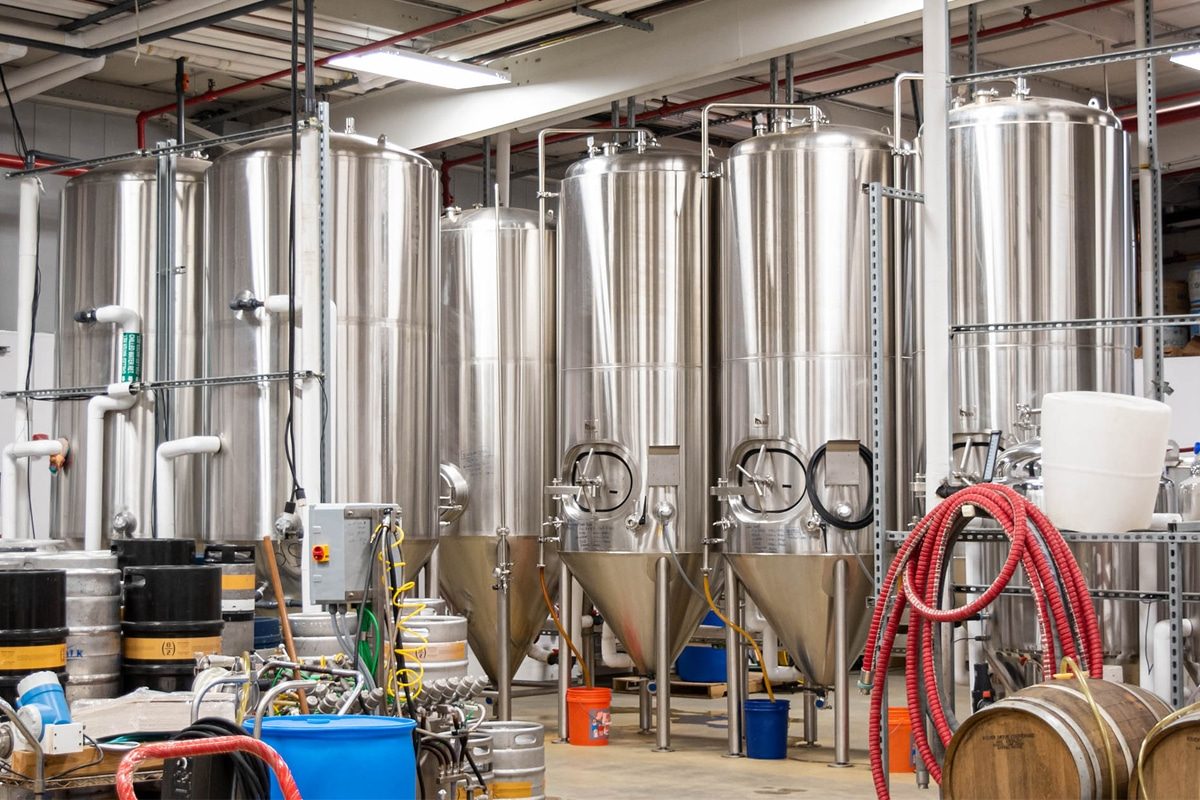
Summarize
In the meticulous art of fermentation, the cleaning process for fermentation tanks emerges as a crucial ritual, a symphony of precision and dedication. From meticulous preparation and the scientific nuances of cleaning to the orchestrated steps of CIP systems, every stage is a testament to commitment. The post-cleaning documentation, a meticulous record-keeping finale, fortifies quality assurance and ensures regulatory compliance. In this journey of mastery, the cleaning process transcends routine maintenance, becoming a pledge to purity, a celebration of excellence, and an essential chapter in the alchemical odyssey of fermentation.
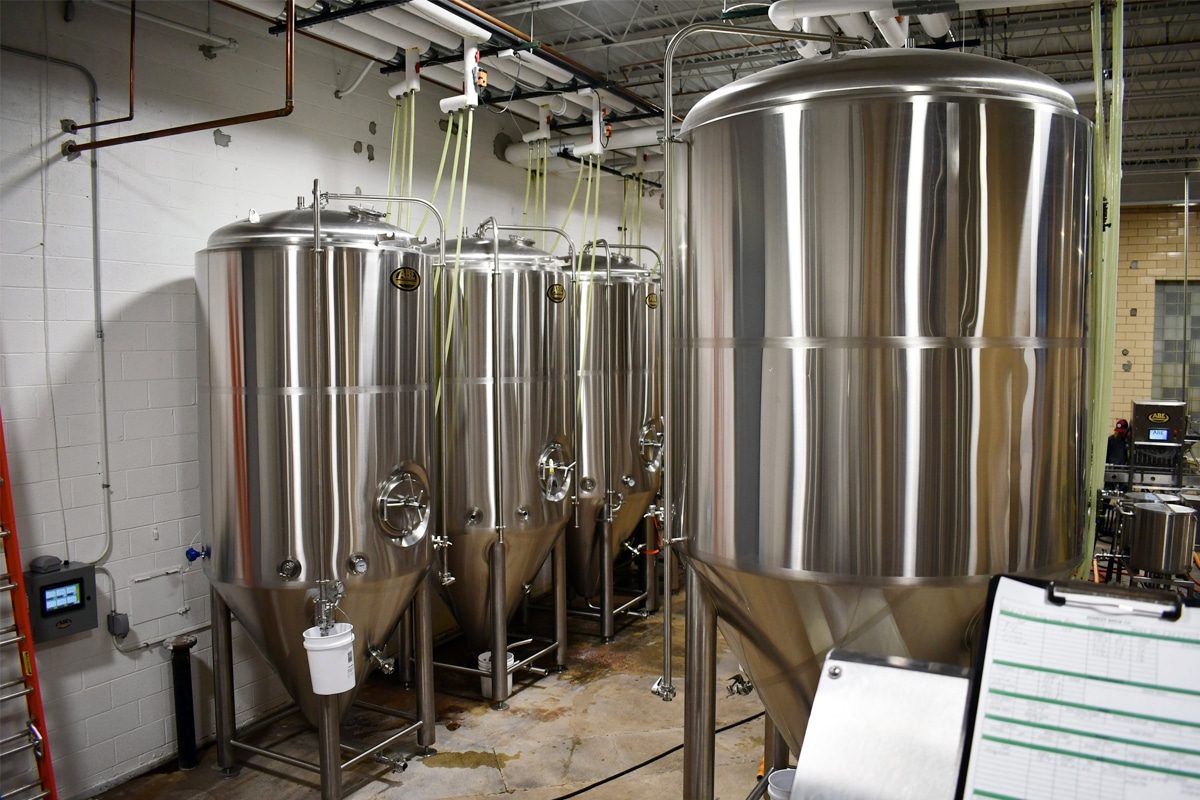
Fermentation Tank Solutions
For those seeking excellence in fermentation, ZYB Craft offers tailored solutions for state-of-the-art fermentation tanks. Our commitment extends beyond providing equipment, we embark on a journey with you, ensuring that every aspect of fermentation, including the cleaning process, aligns with the highest standards. Partnering with ZYB Craft for your fermentation tank needs isn’t just an investment in equipment, it’s a commitment to excellence. Our solutions, coupled with our expertise, ensure that your fermentation process, including the vital cleaning stages, meets and exceeds industry standards. Contact us today, and let’s embark on a journey toward unparalleled fermentation excellence.



